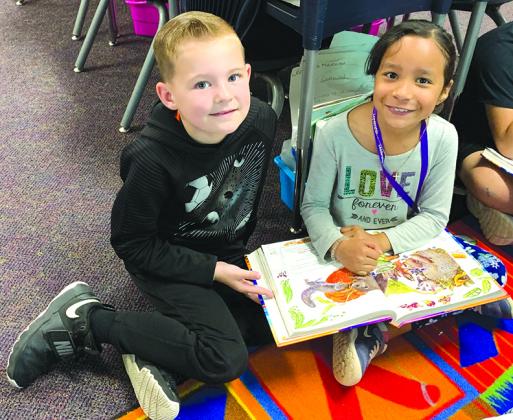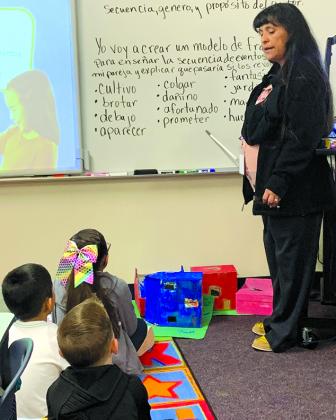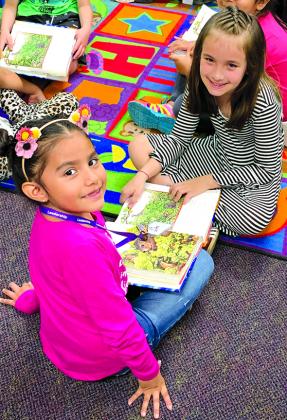Program offers second graders chance to learn Spanish, English
Snyder Primary School second graders are on track to become the two-way dual language program’s first group of bilingual students.
The program originally helped Spanish students learn English, but three years ago it expanded, allowing selected English-speaking students entering kindergarten to learn Spanish.
Students in the program will be fluent in both English and Spanish once they reach the fifth grade.
Assistant Principal Katy Cade said she is glad her son, second-grader Parker Cade, was selected for the program.
“This is a great opportunity for any parent wanting their child to succeed academically,” she said. “Not only is he (Parker) more culturally aware and diverse, but research shows that students in the program will continue to be multiple grade levels ahead of their peers because learning a new language strengthens brain development when children start at a young age.”
Research by Richard Gomez, founder of the dual language program, indicates learning more than one language at the same time is not confusing to young children.
Instead studies of children in various dual language programs across the state showed it helped them develop multiple language systems and increased cognitive functions.
Cade said dual language learners tend to demonstrate greater working memory, reasoning, flexibility and problem solving.
In order for the students to be 100 percent successful, they must remain in the program for the entire duration — kindergarten through fifth grade.
“It’s really neat seeing the students work with each other,” Cade said. “The English (speaking) students are paired with Spanish (speaking) students and they have to depend on each other and work together throughout class assignments because the teachers may only be speaking in Spanish or English for the day, so the students will have to translate and help each other figure it out. The teachers cannot translate for them. That’s why they are partnered.”
Parents with English-speaking children entering the program can expect their child to learn subjects only in their native language for the first two years of the program before being mixed with Spanish-speaking students to learn Spanish.
Second grade teacher Magdalena Jaimez, who teaches Spanish language arts, science and social studies, said it’s important for students to learn the foundation of their native language because it will make learning a second language easier.
Jaimez said this is the school’s first year having both groups of students learning in the same classroom.
“Throughout the program we will continue to teach students their native language so they can continue to build their first language,” Jaimez said. “It’s important to build their native language so they don’t fall behind academically. In order to ensure they aren’t falling behind, we have days where we only have conversations speaking Spanish and days we only have conversations speaking English. The repetition of these basic conversations will help them learn commands and visuals in both languages.”
Jaimez said on Mondays, Wednesdays and Fridays, students may only hold conversations with each other in Spanish, while on Tuesdays and Thursdays, they hold conversations in English.
However, regardless of the day, students are taught language arts, science and social studies in Spanish, and math and English language arts in English.
Cade said having students learn language arts in both languages simultaneously will allow them to apply their reading comprehension and writing skills in their native language toward reading and writing in the second language.
“This is proven to be successful,” Cade said. “This allows Spanish-speaking students to read and write in English, and English-speaking students to learn how to read and write in Spanish without letting the students fall behind academically.”
“When English (speaking) students are paired with Spanish (speaking) students, it forces them to learn,” Jaimez said. “I am not allowed to translate, so when we are reading and doing activities in Spanish, they have to depend on each other.”
Parents wanting more information about the program and qualification guidelines are asked to attend a dual-language information session at the school at 6 p.m. April 15.
Cade said parents may apply for the program at the school’s annual kindergarten round-up, which will be held April 9-12.




